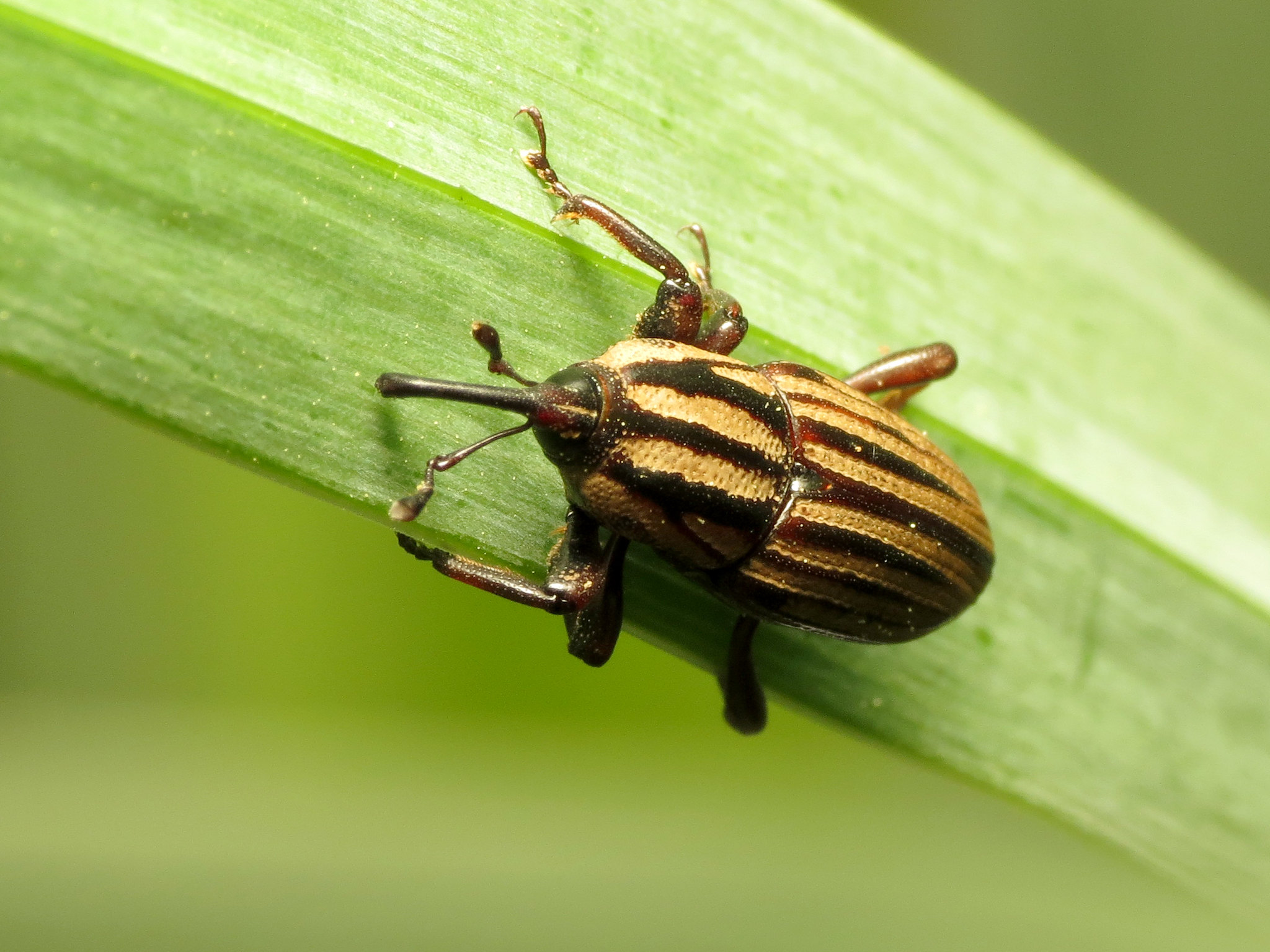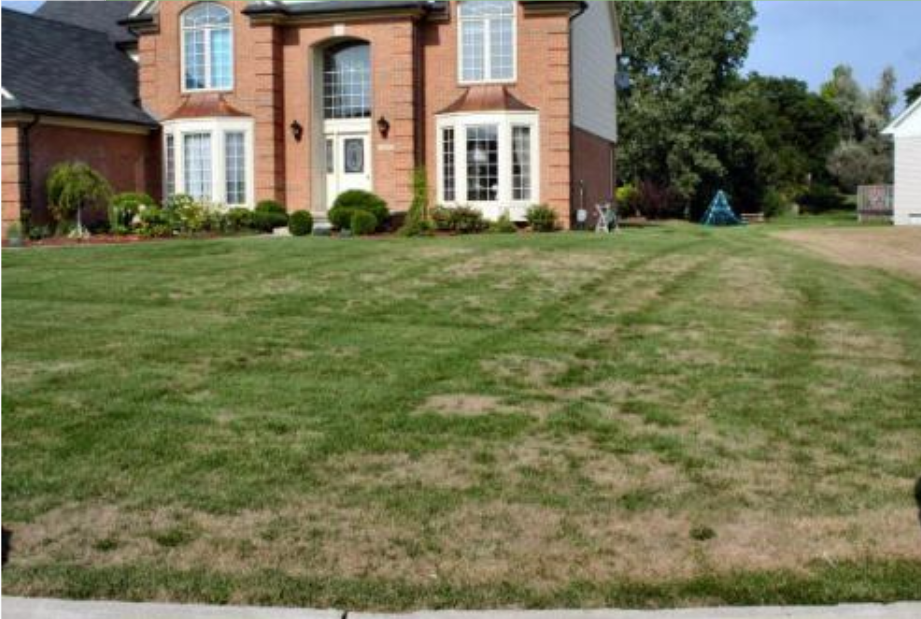
Have you noticed your lawn is looking a little sad? Thinning turf, brown spots, or even a full section that’s dead (even though you’ve got a sprinkler pointed at it). If so, your lawn could be infested with billbugs. You see, billbugs love high-cut turfgrass. They can be present at any time of year and make your luscious lawn look like it’s fallen victim to a major drought.
What Are Billbugs?
Billbugs are a type of weevil of the genus Sphenophorus. There are 71 different types around the world, 64 of them in North America. About 10 species enjoy making a good meal of your turfgrass. The most common types are:
- Bluegrass billbugs.
- Hunting billbugs.
- Lesser billbugs.
- Unequal billbugs.
- Phoenix billbugs.
- Rocky Mountain billbugs.
- Corn billbugs.
Of them, two deserve singling out — the bluegrass and hunting.
Bluegrass Billbug
This pest (Sphenophorus parvulus Gyllenhal) is considered the most harmful type for cool-season turf. This species is often found in the Northeastern states including Maine, New Jersey, and New York. It’s attracted to Kentucky bluegrass, perennial ryegrass, fescues, and bentgrass. But bluegrass billbugs also like some warm-season turf and can be found in Southeastern states such as Florida, North Carolina, and Texas.
Hunting billbugs
Hunting billbugs (S. venatus vestitus Chittenden) are another common and harmful variety of these lawn pests. Like the bluegrass billbug, these weevils threaten the same cool-season grasses. And they are often found in New Jersey and Virginia. Down South and along the Gulf Coast, they attack warm-season grasses such as Zoysiagrass, Bermudagrass, St. Augustine grass, centipede grass, and Bahia grass.
While the other types are not as common, they are still prevalent in certain areas as many of their names give away. And you can find them from coast to coast and even in Hawaii.
How Do You Identify Billbugs?
An adult billbug is a weevil that is either black or gray in color. A billbug adult has a long, narrow snout extruding from its head and a fairly broad thorax (or shoulder) that takes up around 1/3 of its total length. Its larvae are either cream or white in color and have hardened reddish-brown head capsules. They can be anywhere from 1/16 of an inch to 1/4 of an inch in size and basically look like little white grubs.

Although these little pests are legless, which is what makes them different from other types of lawn pests, they move across the soil surface and thatch by pulling and pushing like a worm – and that’s what causes the damage to your lawn. Unfortunately, they are usually hard to see — until it’s too late. You’d have to dig around the roots to spot them.
Once they grow into adults, you can identify them. And you may even see them walking along your driveway in search of a place to lay eggs – which will hatch in around one to two weeks starting the larvae to adult billbug lifecycle all over again.
Billbug Damage: What Does It Look Like?
In most cases, the first signs of billbug damage can be seen once temperatures begin to warm. Billbugs overwinter as adults, and then begin to lay their eggs in the grass stems in late spring and early summer. Their egg-hatch happens about one to two weeks later. It’s in this larval stage that billbugs wreak their havoc on home lawns.

During this phase of their life cycle, they wriggle their legless bodies down below the grass blades and toward the crown and roots of the turf. And the larvae feed on it. But the damage isn’t that noticeable until mid to late July or August, when they pupate. During the months without much rain, if the billbug larvae destroy the turf crowns, they kill the whole grass plant.
What this looks like at first is typically thinning or irregular mottling of the grass. Basically, it looks like a lack of rain is causing damage. If the problem isn’t identified as a billbug infestation, and it goes on, ultimately the entire lawn can look brown and dead.
According to Dr. David Smitley at Michigan State University Extension, the threshold for billbugs is “unacceptable damage or 1/3 of grass plants dead.”
How to Identify a Billbug Infestation
So how can you tell if you’ve got billbug grubs, grubworms, some sort of fungus, or you just need to water the lawn more? According to Bobby Major, general manager of Weed Out Lawn Spray in Hopkinsville, Ky., homeowners can get to the root of the problem in different ways.
“In our area, at least, you can call your local county extension agent and they will come out for free to analyze your yard,” he said. He also said that knowing what you are dealing with is important because it impacts the treatment. “If the problem is a fungus, an insecticide won’t help. And if you’ve got grub worms rather than billbug larvae, you’d use a subsurface spray rather than a broad spectrum spray.”
Bobby said that grub worms — which grow into adult beetles — are easy to distinguish from billbug larvae. “Unlike billbug larvae, which have a brown head, grub worms are usually solid white,” he said. Billbug larvae are also much smaller.
Another way to identify billbug larvae is by looking at the damage on your turf. Here’s how to tell:
- Tug at the dead stems of the turf.
- Check to see if the stems break easily.
- Look inside the stems to see if they are hollowed out and full of sawdust-like frass material. That’s the excrement of the larvae.
If you go through all three steps and do find that the insides of the grass stems are filled with a sawdust type material, then you have a billbug infestation.
How to Get Rid of Billbugs
Ideally, you want to get rid of these home lawn pests before you have a full-blown billbug infestation on your hands. Keeping your lawn healthy and well-maintained by is the best proactive measure that you can take. Mow the grass regularly and keep it fertilized and well-watered to reduce drought stress and stimulate new growth.
Following these practices will help to reduce the risk of damage caused by billbugs. But if you’ve already got an infestation, you will have to take more drastic measures to control billbugs.
One way to combat billbugs is by integrated pest management (IPM). This practice includes several principles such as:
- Selecting turfgrass that is well adapted for the site.
- Proper mowing, fertilization, and irrigation.
- Thatch management.
- Turf cultivation.
Using integrated pest management, you could sod your lawn with Endophyte-enhanced (E+) turfgrasses. You can find E+ cultivars of perennial ryegrass, creeping red fescue, and tall fescue that is resistant to both billbug larvae and adults. If at least 40% of your plants are enhanced with endophytes, it has a stronger chance of resisting a billbug infestation.
What Insecticide Applications Work on Billbugs?
If the idea of integrated pest management seems like a lot of work, you can also try using insecticides. In his turfgrass entomology class at MSU, Dr. Smitley lists the following insecticides as treatments for billbugs:
- Aloft
- Arena
- Meridian
- Merit
He recommends that you “apply in mid to late May to lawns damaged in previous years by billbugs.”
Pest Control Methods
Depending on where you are in the country and who you ask, there are three different recommended strategies to manage billbugs: preventive adult billbug control, preventive billbug larvae control, or curative billbug larvae control.
Preventive Adult Billbug Control
This method targets billbug adults as they come out of their overwintering. You would apply an insecticide on the surfaces of your home lawn, so they come in contact with it before they begin to lay eggs. You can also use an insect-parasitic nematode Steinernema carpocapsae here as a biological control. This can be an effective method if you get the timing right. This can vary depending on what region of the country you’re in. So do your research or ask an expert in your area if you aren’t sure.
Preventive Billbug Larvae Control
Another plan of attack is to target the eggs after adult billbugs have laid them. You can apply neonicotinoids or diamides to your turf. These chemicals are absorbed by the plants and distributed throughout their tissue. The active ingredients in these reach the larvae and destroy them. These chemicals can sit for an extended period of time, but you do want to time when you use them – and that’s around the same time that you’d try the adult control method.
Curative Billbug Larvae Control
Like the name of this one indicates, this control method is used to treat damage that has already happened. Your best bet here is to prevent further damage. Most of the different insecticides available for use with turfgrass can be applied. Some examples include neonicotinoids, organophosphates, and carbamates. Be sure to water within 24 hours of applying one of these insecticides to ensure that you reach the larvae who are living in the soil below.
Seek Help if Needed
Many lawn care service and pest control companies can help you identify and treat billbugs. Or, depending on where you live, you might be able to get a free analysis of your lawn from your local extension office.
While billbug adults may look a little creepy, it’s the larvae that can really do damage to your lawn. If you identify these pests at any stage of their life cycle, you’ll want to eliminate them before they do too much damage to your lawn!
Main image credit: “Fancy Billbug,” Katja Schulz, CC 2.0